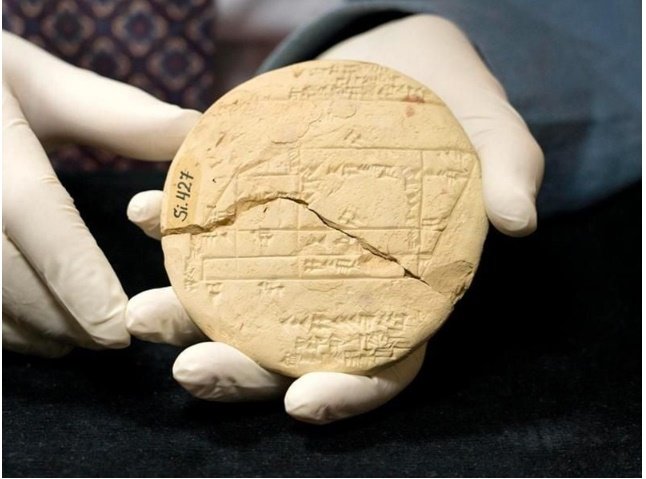Pythagorean Theorem Found on Ancient Babylonian Clay Tablets Predating Pythagoras by 1,000 Years

The Pythagorean theorem is one of the most famous and fundamental mathematical formulas that every student learns in school. It states that in a right-angled triangle, the square of the length of the hypotenuse (the longest side of the triangle) is equal to the sum of the squares of the other two sides. The formula is usually written as a2 + b2 = c2, where a, b and c are the lengths of the sides.
The theorem is named after Pythagoras, a Greek philosopher and mathematician who lived in the 6th century BC. However, recent discoveries have shown that Pythagoras was not the first to know about this relationship between the sides of a right-angled triangle. In fact, ancient Babylonians had already figured out the Pythagorean theorem more than 1,000 years before Pythagoras was born!
How do we know this? The evidence comes from clay tablets that were found in what is now Iraq, dating back to the Old Babylonian period (1900-1600 BC). These tablets contain mathematical calculations and diagrams that use the principles of the Pythagorean theorem to solve problems related to land surveying, construction and astronomy.
The Si.427 tablet, the oldest known example of applied geometry. Photo: UNSW Sydney
One of these tablets, known as Si.427, is considered to be the oldest known example of applied geometry. Unearthed in 1894 in present-day Iraq, it shows a diagram of four adjacent right-angled triangles inside a square, along with a description of the land boundaries and features in cuneiform script. The tablet uses number sets called Pythagorean triples, which are sets of three positive integers that satisfy the Pythagorean equation. For example, 3, 4 and 5 are a Pythagorean triple, because 32 + 42 = 52.
Daniel Mansfield, a mathematician at the University of New South Wales in Australia, who analyzed Si.427, said in a statement: “With this new tablet, we can actually see for the first time why they were interested in geometry: to lay down precise land boundaries.” He published his findings in the journal Foundations of Science in 2021.
Another tablet, known as Plimpton 322, contains a table of 15 rows and four columns of numbers that represent Pythagorean triples. The tablet was discovered by an American archaeologist named Edgar Banks in 1922 and is now kept at Columbia University in New York. Mansfield and his colleague Norman Wildberger published a paper in 2017 arguing that Plimpton might have been used in construction of canals, palaces and temples, or perhaps in land surveying



